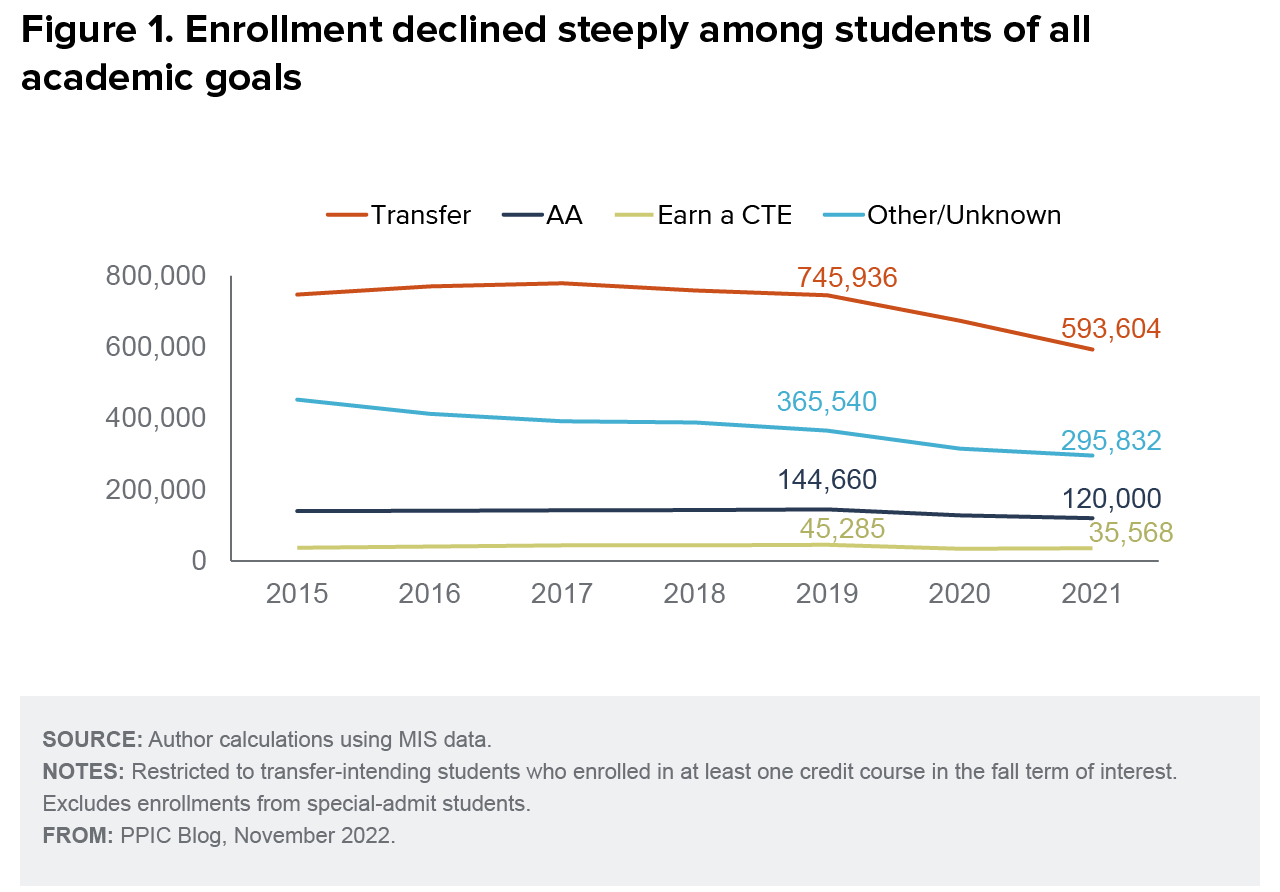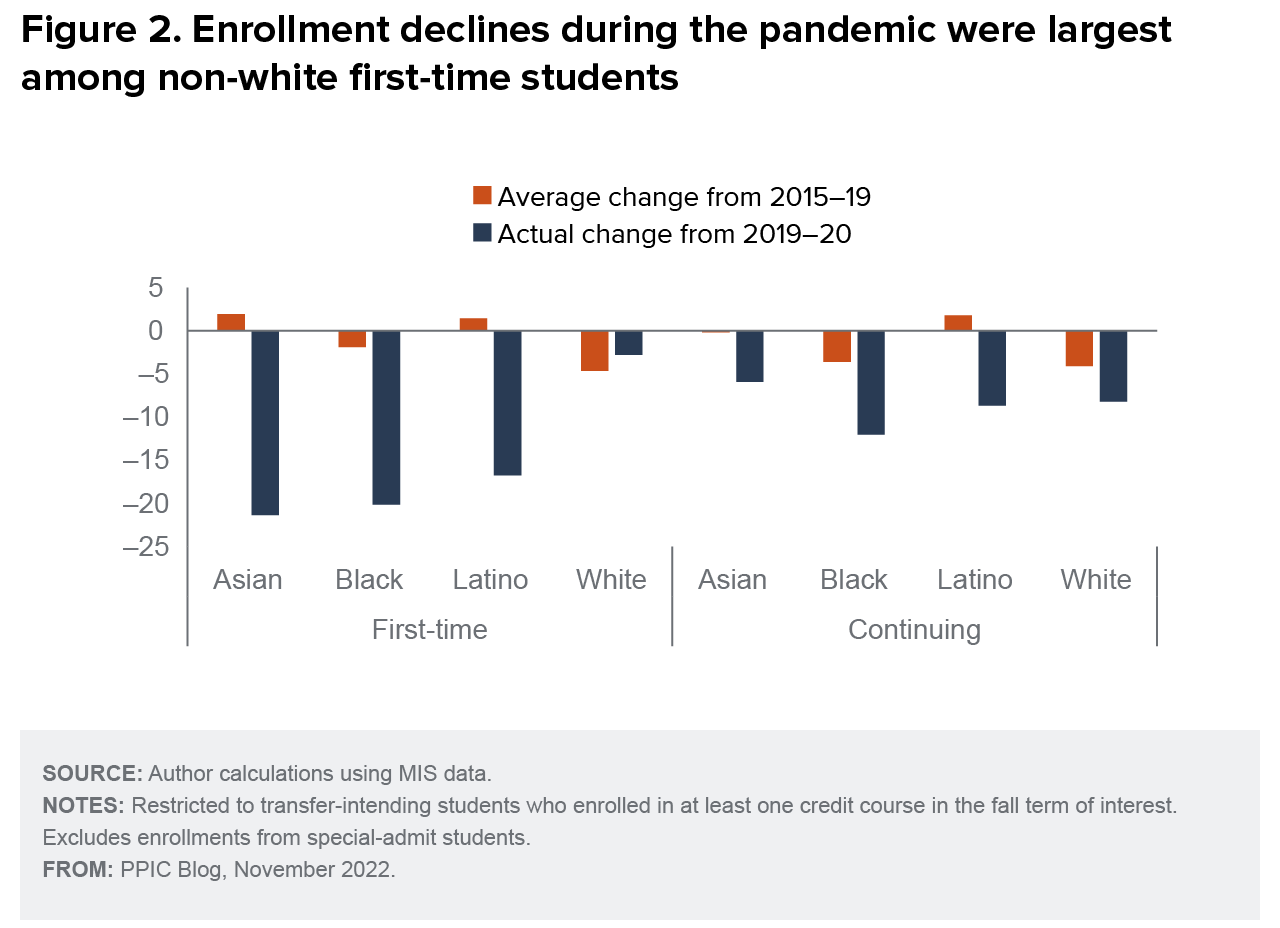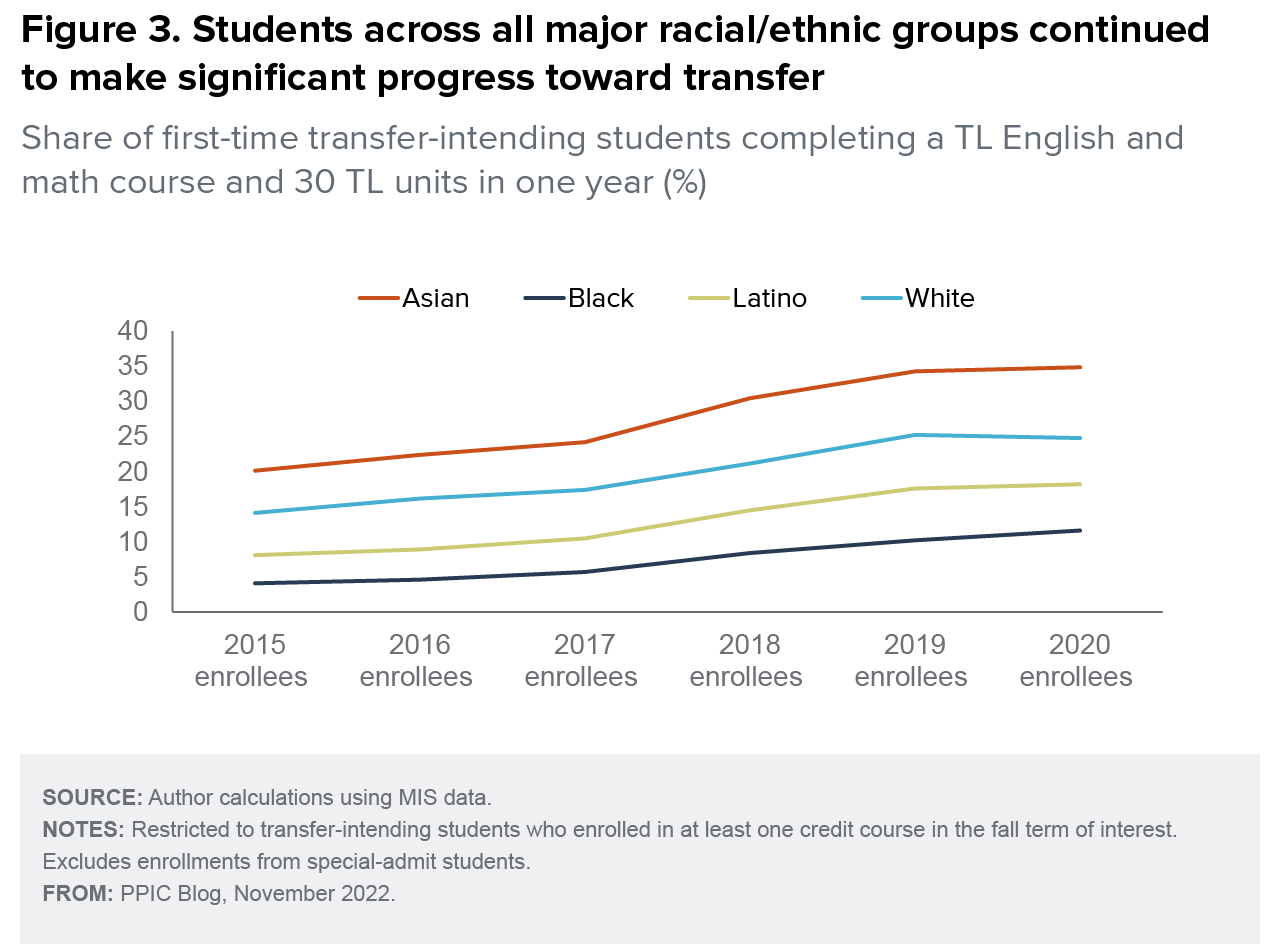Olga Rodriguez, senior fellow and director of the PPIC Higher Education Center, testified before Assembly Budget Subcommittee No. 2 on Education Finance on November 14, 2022. Here are her prepared remarks.
Thank you for the opportunity to testify this afternoon. My name is Olga Rodriguez and I am a senior fellow and director of the PPIC Higher Education Center. PPIC is a nonpartisan research organization that does not take positions on legislation. My comments are based on research we have conducted on California’s community colleges.
The California Community College system (CCC) plays a key role in meeting the demand for college graduates and promoting equitable college access and completion through its transfer mission. CCCs enroll most of the state’s undergraduates, including large shares of Latino, Black, low-income, and other Californians who are underrepresented among college graduates. The CCC’s contribution to baccalaureate degree production is highlighted by the fact that 44% of the degrees awarded by the University of California (UC) and California State University (CSU) systems in 2020–21 went to students who transferred from a community college.
However, our research finds that the COVID-19 pandemic induced enrollment declines among all CCC students, including those intending to transfer. Figure 1 shows that the transfer-intending population—the largest group of credit college students (57%)—declined 20% between fall 2019 and fall 2021; this translates to about 150,000 fewer students. Figure 1 also shows that the pandemic accelerated a decline in enrollment that was already under way—driven by stalled population growth, K–12 enrollment declines, and a strong labor market, among other factors.

When we examine enrollment by race/ethnicity (Figure 2), we see that the largest declines were among Asian (21%), Black (20%) and Latino (17%) students. Figure 2 also shows that declines were more severe among first-time students. According to a California Student Aid Commission survey of high school seniors in spring 2020, the top two reasons for delaying college enrollment were financial instability and a preference for in-person classes. In our own interviews with college officials, we learned that many students found it challenging to remain enrolled in the face of economic uncertainty, family and work responsibilities, and physical and mental health concerns.

Our research suggests that addressing enrollment declines and closing the degree gap will require boosting access and ensuring that CCC students persist and transfer. Several recent policies and investments aimed at strengthening the pipeline into and through the community colleges are promising steps forward.
- First, recent investments in dual enrollment, which allows high school students to take college courses—and which is spotlighted in the governor’s CCC roadmap and UC and CSU compacts—have put the system on track to help ensure equitable access and success. Our research has found that students who participate in dual enrollment programs known as College and Career Access Pathways (or CCAPs) are especially likely to enroll in CCCs. Importantly, we also find that CCAPs are the only dual enrollment program in which Latino students are equitably represented with respect to the Latino population in the state’s high schools.
- Second, our research has found that Assembly Bill 705 (AB 705)—which mandated equity-centered reforms to community college placement policies—has dramatically increased the number of students successfully completing gateway math and English courses within one year, a key indicator of transfer readiness. Figure 3 shows that the gains have persisted even throughout the pandemic and have been especially notable among Latino and Black students, who were more likely to start below transfer level prior to AB 705.

- Third, the state’s three public higher education sectors have been working together to strengthen the CCC transfer mission. Associate Degree for Transfer (ADT) awards were increasing prior to the pandemic, as was transfer enrollment at UC and CSU. The launch of UC and CSU dual admissions programs—which will streamline the transition from a CCC to a four-year college—offers an opportunity to strengthen pathways into and through the CCC.
- Fourth, CCC enrollment could be boosted by improvements to California’s financial aid structures, along with a new requirement that high school graduates complete the FAFSA or CA Dream Act application (or opt out). Easier access to financial aid is especially important for low-income students. However, tuition is not the biggest barrier to college affordability in California. Covering the cost of housing, transportation, childcare, and other basic needs often poses the greatest challenge to a student’s ability to enroll and remain in college.
Moving forward, it will be critical to monitor transfer rates and college attainment. PPIC will continue to provide independent and nonpartisan research to inform future policies and practices, with the goal of helping ensure that California’s demand for college graduates is met—and, importantly, that the college graduates it produces are representative of the state’s richly diverse population.




